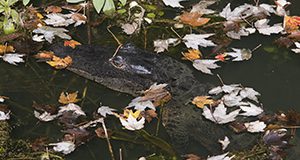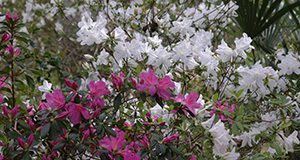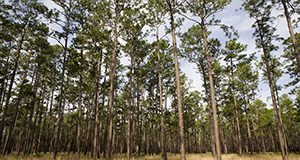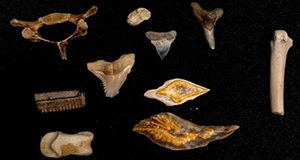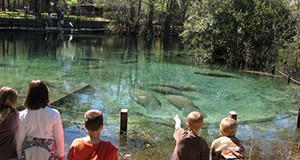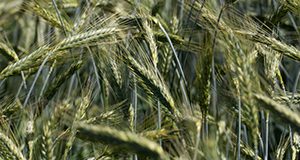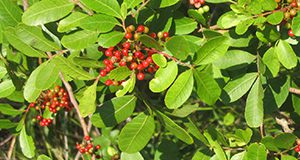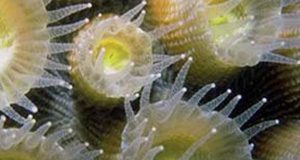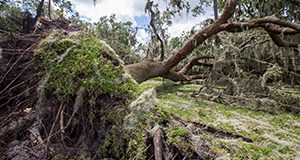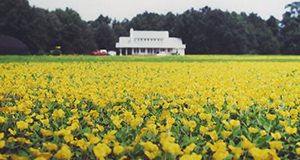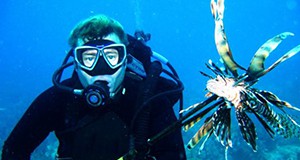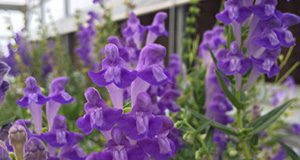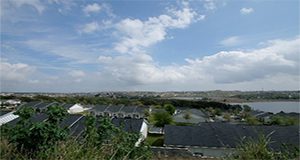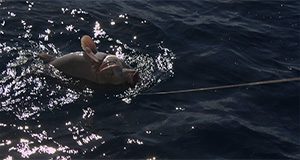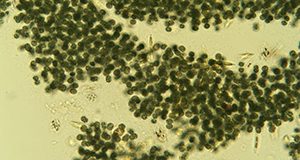La Ley del Agua de Florida de 2016, una política integral de agua que aborda los problemas críticos del suministro y la calidad de agua en la Florida, entró en vigor el 1 de julio de 2016. Creó la Ley de Protección de Acuíferos y Manantiales de Florida, que protege los manantiales alimentados por el acuífero floridano. Written by Michael Olexa, Tatiana Borisova, and Jarrett Davis and published by the UF/IFAS Food and Resource Economics Department.
http://edis.ifas.ufl.edu/fe1047
Category: Environment
Key Plant, Key Pests: Azalea (Rhododendron spp.)
This 8-page document is one in the Key Plant, Key Pests series. It helps identify the most common pests found on azalea. Written by Juanita Popenoe, Caroline R. Warwick, Jacqueline Bourdon, and David J. Norman and published by the UF/IFAS Environmental Horticulture Department, December 2018.
http://edis.ifas.ufl.edu/ep567
Key Plant, Key Pests: Pine Species (Pinus sp.)
This 6-page document is one in the Key Plant, Key Pests series. It helps identify the most common pests found on pine species. Written by Juanita Popenoe, Jacqueline Bourdon, Caroline R. Warwick, and Chris Marble and published by the UF/IFAS Environmental Horticulture Department, December 2018.
http://edis.ifas.ufl.edu/ep565
Florida’s Geologic History
Hundreds of millions of years of geologic processes lead to the formation of Florida. This 7-page fact sheet written by Kyle W. Bostick, Shelly A. Johnson, and Martin B. Main and published by the UF/IFAS Department of Wildlife Ecology and Conservation describes the 3 primary processes that created Florida as we know it today: plate tectonics, carbonate production, and siliciclastic invasion, as well as major processes like sea-level change that continue to reform the morphology of the Florida Platform today.
http://edis.ifas.ufl.edu/uw208
Los recursos hidricos de Florida
Tatiana Borisova y Tara Wade, Departamento de Economia de Alimentos y Recursos, UF/IFAS. This is the Spanish translation of “Florida’s Water Resources,” available in English here.
http://edis.ifas.ufl.edu/fe1044
A Walk on the Wild Side: 2018 Cool-Season Forage Recommendations for Wildlife Food Plots in North Florida
Nationally, there is great interest in wildlife forages. Florida's light and sandy soils, hot and humid summers, and seasonal droughts pose unique challenges for successful food plot plantings. This 5-page document provides updated cool-season forage recommendations for wildlife food plots in north Florida. Written by A. R. Blount, M. Wallau, H. K. Ober, E. Rios, J. M. B. Vendramini, J. C. B. Dubeux, Md. A. Babar, C. L. Mackowiak, and K. H. Quesenberry, and published by the UF/IFAS Agronomy Department, revised November 2018.
http://edis.ifas.ufl.edu/ag139
Wildlife of Florida Fact Sheets
Dune Restoration Plants fact sheets
- Atlantic St. John’s Wort, Hypericum tenuifolium Synonym: Hypericum reductum
- Beach Morning-glory Ipomoea imperati and Railroad Vine Ipomoea pes-caprae subsp. brasiliensis
- Bitter Panicgrass, Bitter Panicum, Panicum amarum
- Coastal Groundcherry, Physalis angustifolia
- Coastal Sand Frostweed, Crocanthemum arenicola Synonym: Helianthemum arenicola
- Coastalplain Honeycombhead, Balduina angustifolia
- False Rosemary, Conradina canescens
- Florida Rosemary, Ceratiola ericoides
- Goldenaster, Chrysopsis
- Gopher Apple, Geobalanus oblongifolius Synonym: Licania michauxii
- Gulf Bluestem, Maritime Bluestem, Schizachyrium maritimum
- Gulf Coast Lupine, Lupinus westianus var. westianus
- Inkberry, Ilex glabra
- Myrtle Oak, Quercus myrtifolia
- October Flower, Polygonella polygama
- Sand Live Oak, Quercus geminata
- Sandhill Milikweed, Asclepias humistrata
- Sea Oats, Uniola paniculata
- Seabeach Evening Primrose, Oenothera humifusa
- Seacoast Marshelder, Iva imbricata
- Seaside Goldenrod, Solidago sempervirens
- Squareflower, Paronychia erecta
- Wax Myrtle, Morella cerifera Synonym: Myrica cerifera
- Woody Goldenrod, Chrysoma pauciflosculosa
- Yaupon, Ilex vomitoria
Brazilian Peppertree Control
Brazilian peppertree is encroaching upon nearly all terrestrial ecosystems in central and south Florida. This 5-page document discusses the plant's habitat, identification, characteristics, and biology as well as control methods. Written by K. T. Gioeli, S. F. Enloe, C. R. Minteer, and K. A. Langeland, and published by the UF/IFAS Agronomy Department, revised November 2018.
http://edis.ifas.ufl.edu/aa219
A Guide to Common Stony Corals of Florida
Shallow-water coral reefs have seen large declines in coral cover over the last 40 years. This 19-page guide written by Joseph A. Henry, Roy P. E. Yanong, Maia P. McGuire, and Joshua T. Patterson and published by the UF/IFAS Program in Fisheries and Aquatic Sciences of the School of Forest Resources and Conservation describes Scleractinian (stony) corals that were once prevalent on reefs in Florida. The Coral Reef Protection Act in Florida prohibits damaging coral reef habitats in any way, and several of these species are federally protected under the Endangered Species Act. In their natural environment, these corals should never be handled or touched. Although several of the species discussed here are growing more numerous due to their wide tolerance, the overall condition of coral reefs along our coastline is declining, and the reefs are highly threatened because the most important reef-building corals are in a state of decline.
http://edis.ifas.ufl.edu/fa210
Hurricane Impacts on Florida's Agriculture and Natural Resources
Hurricanes are capable of affecting almost everything in their paths. Their strong winds and heavy rains can directly impact both inland and coastal areas in short periods that usually last about a day. This new 10-page document reviews basic facts about hurricanes and their effects in Florida and discusses ways they might affect Florida's agriculture and natural resources. Written by Young Gu Her, Ashley Smyth, Pamela Fletcher, Elias Bassil, Ulrich Stingl, Zachary Brym, and Jiangxiao Qiu, and published by the UF/IFAS Department of Agricultural and Biological Engineering, October 2018.
http://edis.ifas.ufl.edu/ae528
Ecosystem Services Provided by Grass-Legume Pastures
Grasslands produce far more than beef and milk. They provide ecosystem services that benefit people and the environment. This new 3-page document discusses how integrating forage legumes into grasslands enhances their capacity to provide ecosystem services, such as C sequestration, habitat for wildlife and pollinators, water catchment and purification, and nutrient cycling. Written by Jose Dubeux, Jr., Lynn Sollenberger, Mark Mauldin, and Liza Garcia, and published by the UF/IFAS Agronomy Department, October 2018.
http://edis.ifas.ufl.edu/ag423
First report of an emerging ulcerative skin disease in invasive lionfish
A disease first reported in the summer of 2017 has been causing skin ulcers in invasive lionfish off the coasts of Florida and the Caribbean. Fish health scientists are investigating this disease, but initial evaluations have not yet found the cause. This 7-page fact sheet written by Holden E. Harris, Alexander Q. Fogg, Roy P. E. Yanong, Salvatore Frasca Jr., Theresa Cody, Thomas B. Waltzek, and William F. Patterson III and published by the UF/IFAS program in Fisheries and Aquatic Sciences of the School of Forest Resources and Conservation describes research efforts to discover more about this disease and its potential to spread to other species as well as its effect on lionfish populations, the lionfish fishery, and reef fish communities.
http://edis.ifas.ufl.edu/fa209
Dune Restoration and Enhancement for the Florida Panhandle
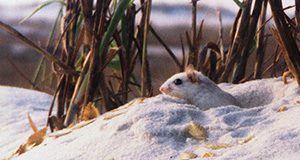
Published by the UF/IFAS Florida Sea Grant College Program, this manual provides an overview of the coastal ecosystems along the Florida Panhandle and shows how dunes can be restored and enhanced in this region of the Northern Gulf of Mexico.
In addition to direct experience acquired over many years of field work and experimentation, authors Chris Verlinde, Mack Thetford, and Debbie Miller consulted peer-reviewed academic journals, government documents, and various online resources to create the manual. Undergraduate and graduate students from the University of Florida and local professionals worked together with the UF/IFAS researchers to develop and test practical restoration techniques for Florida’s dunes.
http://edis.ifas.ufl.edu/sg156
Assessment of the Economic Impact Associated with the Recreational Scallop Season in Hernando County, Florida
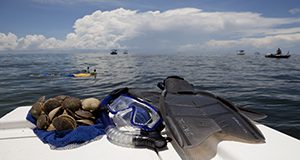
Recreational scalloping has become an increasingly popular activity within the Big Bend region of Florida, and Hernando County is the southern extent of healthy, harvestable bay scallop populations. State resource managers and County administrators expressed a need to know how the recreational scallop season impacts the local economies. This 10-page fact sheet written by Brittany Hall-Scharf, Charles Adams, Alan Hodges, and Stephen Geiger and published by the UF/IFAS Florida Sea Grant College Program and the UF/IFAS Food and Resource Economics Department presents results from a UF/IFAS study to determine the economic benefits derived from coastal and waterway access during recreational scalloping season in Hernando County.
http://edis.ifas.ufl.edu/sg161
Florida Medicinal Garden Plants: Skullcap (Scutellaria spp.)
Scutellaria species (spp.) are perennial, herbaceous plants that are cultivated for both their ornamental and medicinal value. This 5-page document describes the uses and growing requirements of this species. Written by Amanda Morgan and Brian Pearson and published by the UF/IFAS Environmental Horticulture Department, September 2018.
http://edis.ifas.ufl.edu/ep564
Using County Typology Informed by Population Size to Understand Key Audience Characteristics for Tailored Landscape Water Conservation Programs
A major priority for UF/IFAS is the promotion of science-based landscape management practices to conserve water resources. This 7-page publication outlines specific opportunities that exist for tailoring landscape water conservation programs to Floridians who live in more and less metropolitan areas. Written by Laura A. Sanagorski Warner and John M. Diaz and published by the UF/IFAS Department of Agricultural Education and Communication, September 2018.
http://edis.ifas.ufl.edu/wc314
Production and Performance of Triploid Oysters for Aquaculture
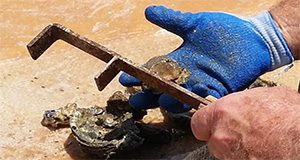
This 9-page fact sheet written by Huiping Yang, Natalie Simon, and Leslie Sturmer and published by the Program in Fisheries and Aquatic Sciences of the UF/IFAS School of Forest Resources and Conservation focused on basic aspects of triploid oyster aquaculture, including the general oyster aquaculture industry, the approaches for triploid induction, performance of triploids, and correlated ploidy determination to convey basic knowledge of triploid oyster aquaculture to the oyster industry and the general public.
http://edis.ifas.ufl.edu/fa208
Barotrauma and Successful Release of Fish Caught in Deep Water
If you catch a fish you are not going to keep, help it survive and get back to the deep! Throwing back your unwanted catch is good practice because healthy released fish can live to grow and reproduce, which benefits the fish population and the future of fisheries. But deepwater fish can have trouble getting back where they came from without a little assist from the angler. This 4-page fact sheet written by Betty Staugler, Holly Abeels, Angela Collins, Shelly Krueger, and Kai Lorenzen and published by the UF/IFAS Florida Sea Grant College Program describes barotrauma, a problem that, if left untreated, will kill otherwise perfectly healthy fish, and explains a few quick and simple methods to relieve fish suffering from barotrauma and help them get back home healthy and strong.
http://edis.ifas.ufl.edu/sg160
A Response to Frequently Asked Questions about the 2018 Lake Okeechobee, Caloosahatchee and St. Lucie Rivers and Estuaries Algal Blooms
Heavy rainfall with Hurricane Irma in 2017 and a rainy spring in 2018 set the stage for large-scale summer algal blooms in Lake Okeechobee and the St. Lucie and Caloosahatchee Rivers and Estuaries. Concerned residents and visitors flocked to social media. Authors Lisa Krimsky, Ed Phlips, and Karl Havens read their posts and tweets and now respond to concerns and questions about algal blooms in this 7-page fact sheet published by UF/IFAS Extension and the Florida Sea Grant College Program.
http://edis.ifas.ufl.edu/sg159
